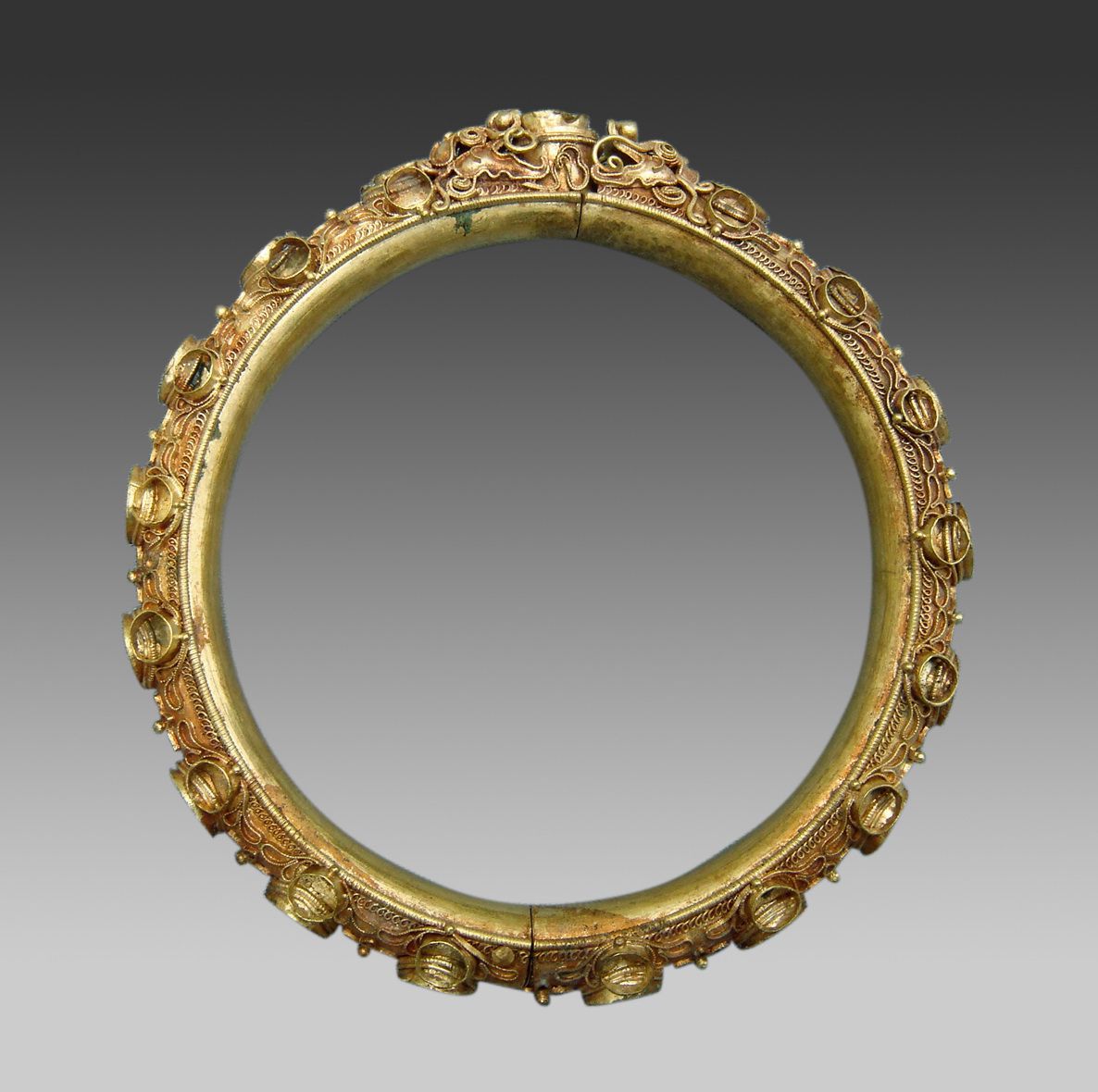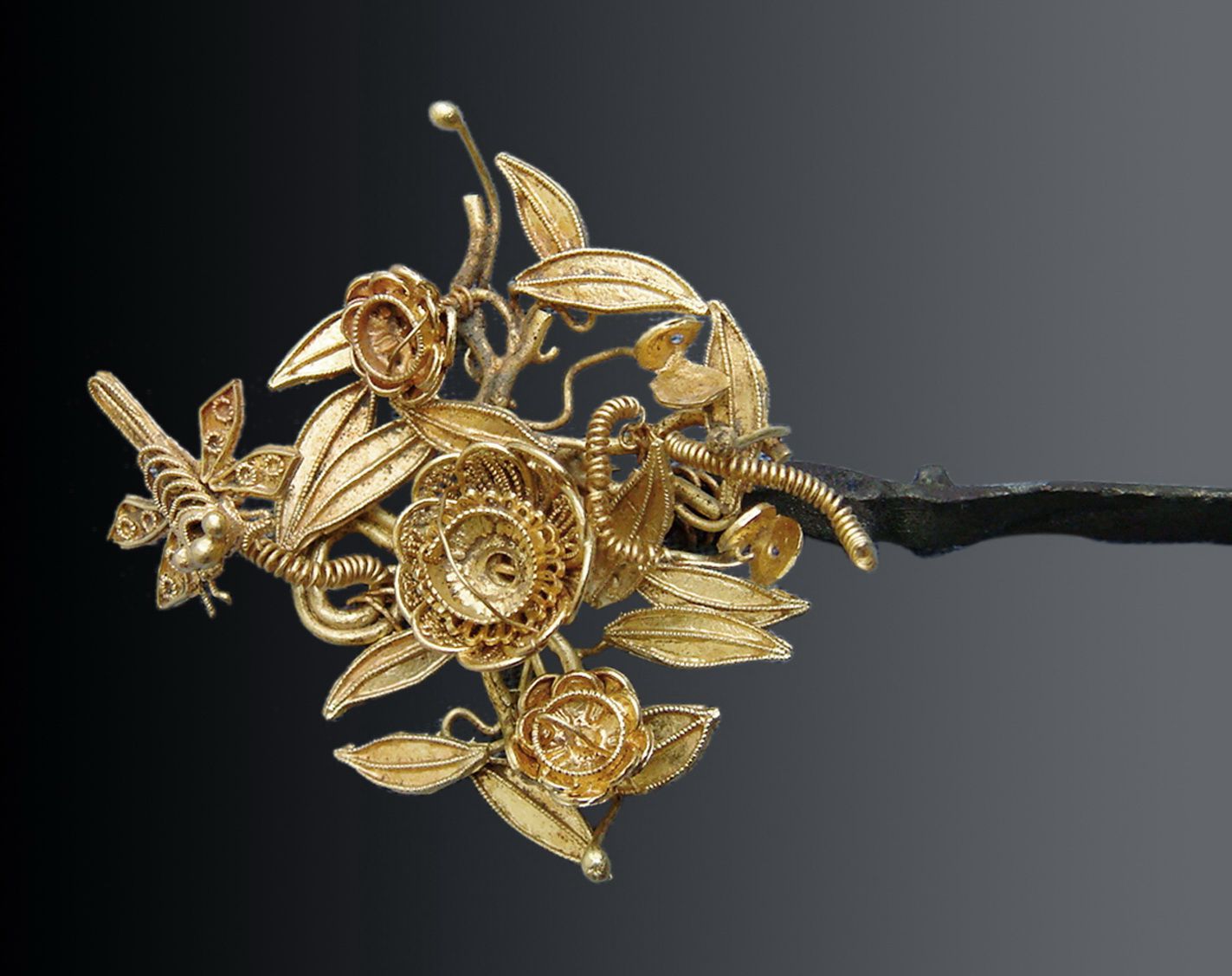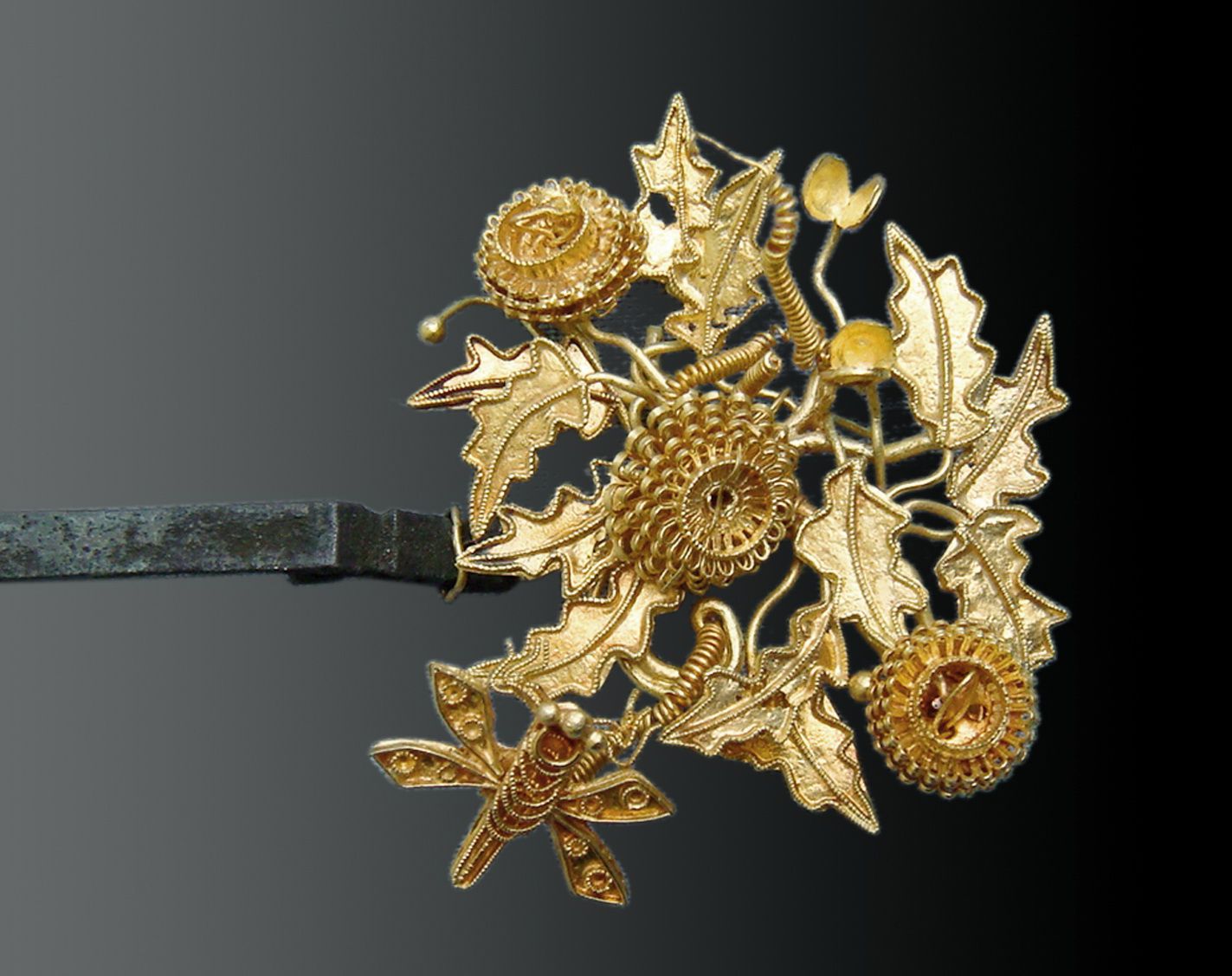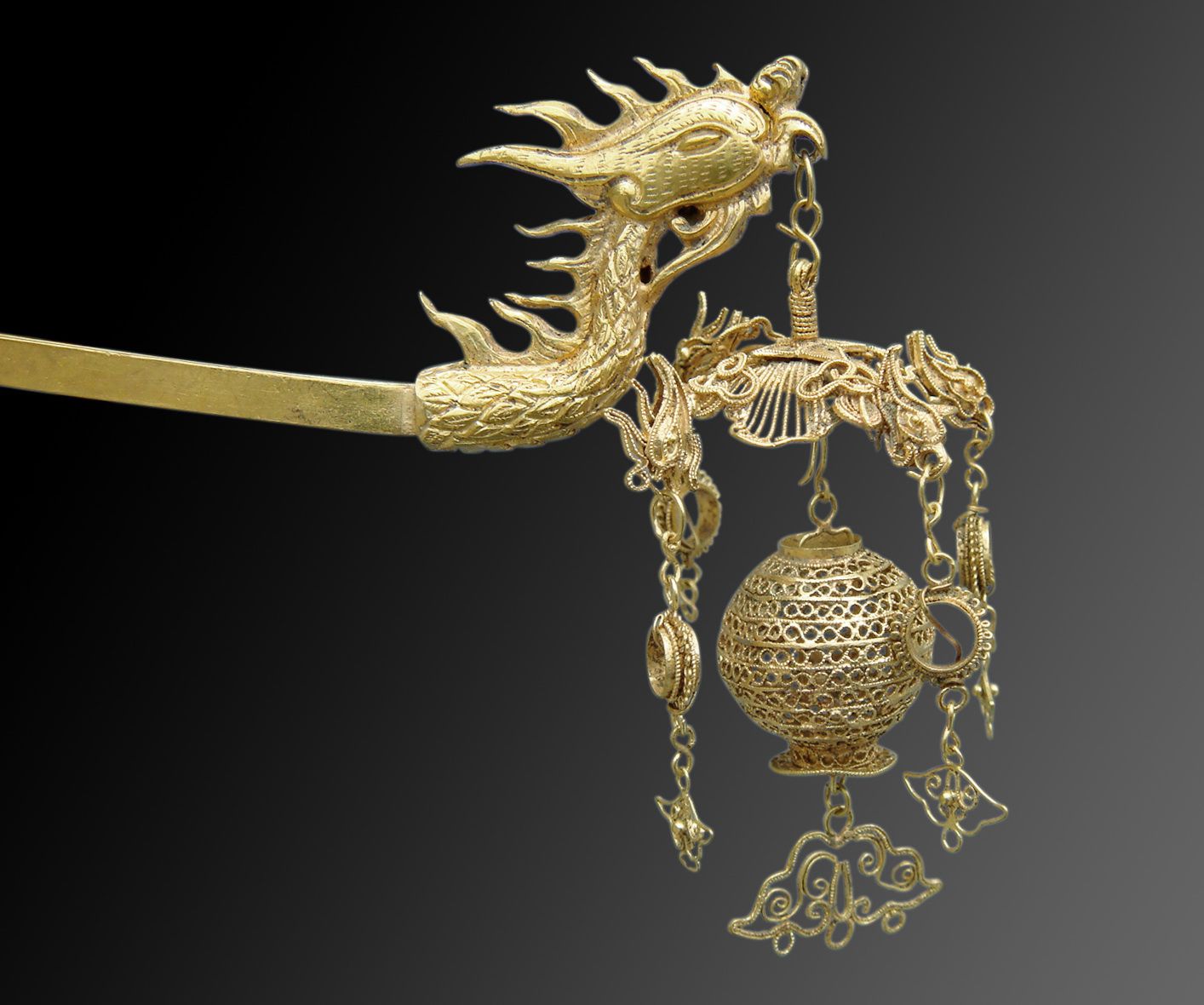Tran Huyen
Rare jewelry collection in the Vietnam National Museum of history highlights the remarkable craftsmanship and intricate symbolism of imperial times.
Humans of every culture have worn and cherished beautiful jewelry for millennia, valuing items not only as striking adornments but also as deeply meaningful symbols.
That age-old love affair with jewelry can be seen in a rare jewelry collection from the era of the Nguyen lords (1558-1777) on display at the Vietnam National Museum of History.

The jewelry collection was originally owned by Vu Kim Loc, a jeweler as well as a collector and well-known artifact researcher in Ho Chi Minh City. It includes a brooch featuring a phoenix, 12 flower brooches, two bracelets and a bac son (a strip of ornament made from rare metal) used to decorate the caps of royals.
The phoenix brooch, 14.25 centimeters long and weighing 15 grams, is made entirely from gold and is the finest piece in the collection. The brooch’s head is decorated with a phoenix holding a lantern in its mouth and demonstrates highly sophisticated craftsmanship. Meanwhile, the body of the brooch represents the body and tail of the phoenix and splits into two branches with crooked ends. The phoenix’s head was delicately crafted with a crooked beak, long eyes and manes on its crown, chin and the back of its neck.

The lantern held in the phoenix’s beak has an umbrella on top, a khanh (a type of musical instrument) below and various other decorations hung around it. The phoenix is a noble bird, one of the four holy creatures in traditional mythology alongside the dragon, qilin and turtle. It’s also considered the symbol of empresses and consorts.
The flower-shaped brooch set is comprised of 12 brooches of up to 12 centimeters in length. Decorating the handles of these brooches are clusters of flowers and leaves made from gold, adorned by emerald gems. Four kinds of flowers are found on these brooches, of which two are identified as apricot blossoms and chrysanthemums. The handles of these brooches are made from silver.

The golden bracelet set is made up of two bracelets, both roughly six centimeters in diameter and 20 grams in weight. The bodies of these bracelets are hollow with 16 holes in series of flower patterns. These holes are the seats of gemstones, which were used to increase the value of the bracelet. The lock of one bracelet was decorated with two dragons holding a pearl or a gem, but it has been lost.
Last but not least is a bac son, an ornamental strip made from rare metal and elaborately carved to decorate caps of kings, queens, officials and nobles in imperial times. This bac son is 18.5 centimeters long and weighs 42 grams. It’s crafted from a thin piece of gold with patterns of clouds and waves as background for other decorations including three phoenixes and three clusters of flowers and leaves. Looking at the layout of these decorations, it can be seen that the number of clusters should be four, so the one on the far right of this bac son was probably lost. There is also an array of holes serving as seats for gems or pearls. Phoenixes make up most of the decorations on this bac son and thus it was used on the caps of queens and consorts.

As written in Kham dinh Dai Nam hoi dien su le (Repertory of the Administrative Regulations in the Kingdom of Dai Nam), caps and golden brooches decorated with phoenixes and golden brooches with flower patterns were exclusively reserved for women of the royal family. These books also show that there were three phoenixes, eight phoenix brooches and 12 flower brooches on the queen’s cap.
As an experienced jeweler and researcher specializing in the restoration of Nguyen Dynasty and Nguyen lords’ outfits and jewelry, Vu Kim Loc discovered that the cloud patterns on the bac son were masterfully crafted using methods of engraving, embossing and puncturing that clearly resemble techniques of the Champa and not the Vietnamese or Chinese people of that time.
Additionally, methods used to roll gold into thin sheets for engraving on the phoenix brooch’s lantern and the pearl-polishing technique used in the bracelet are evidence of jewelry-making skills acquired from Europe during the period of the Nguyen lords. This acquisition was described in detail in Phu bien tap luc (Miscellaneous Chronicles of the Pacified Frontier) written by Le Quy Don at the end of the 18th century.
After referencing research documents and making comparisons to other jewelry of the Nguyen lords’ time, Vu Kim Loc concluded that this jewelry set had been made during the rule of Lord Nguyen Phuc Khoat (1714 – 1765) and that the owner of this set was a consort. It remains one of the finest and most complete jewelry sets from the Nguyen lords era.










